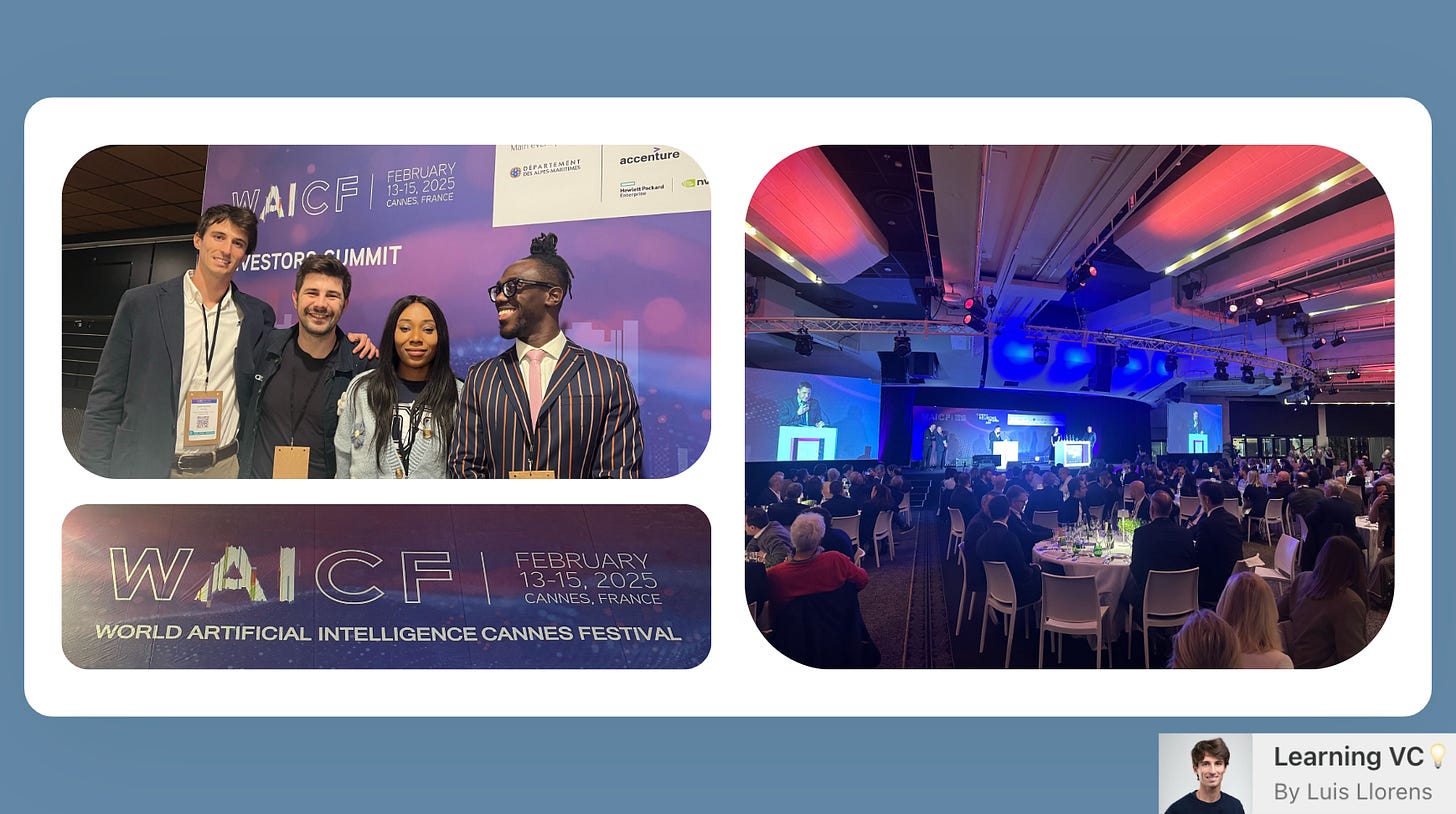How AI is Optimizing Venture Capital Investments & Operations 🧠
Most Promising AI Tools for Investors, the Future of AI in VC, Human-AI Collaboration, Popular GPTs, and more.
Welcome to Learning VC💡! I’m Luis Llorens and I write monthly about venture capital and my personal experiences as an investor. Subscribe to receive new posts and support my work:
Summary
❇️ Current State of AI Adoption in VC Firms
❇️ Build vs Buy AI Tools
❇️ Human-AI Collaboration
❇️ The Future of AI in VC
❇️ Most Popular AI Tools in VC
❇️ Top 3 GPTs for VCs
Brought to you by Harmonic — the startup discovery engine
Did a former portfolio employee just start something new? With the new alert flow in Harmonic, you’ll never miss an opportunity to engage with the best startups at the right time.
Join the likes of NEA, Bessemer, and Redpoint, and monitor your searches automatically from your inbox or Slack!
This post delves into how VCs are leveraging AI across various aspects of our workflow, the challenges we face, and the next frontier of AI-driven investment strategies.
I recently had the privilege of joining a roundtable at the World AI Cannes Festival to discuss how AI is transforming VC Workflows.
As early-stage VC investors, we thrive on identifying the next big opportunity. However, the process is anything but simple—keeping up with rapidly evolving trends and spotting promising entrepreneurs before they even update their LinkedIn.
AI is now at the core of optimizing VC decision-making, from deal sourcing to portfolio management and internal productivity.
❇️ Current State of AI Adoption in VC Firms
AI adoption in VC is accelerating due to advancements in LLMs and data processing, enabling better insights from structured and unstructured data. More startup and founder data is now digitized, making early-stage companies more visible to AI-driven sourcing tools.
For example, updating your LinkedIn to “working on something new” can trigger outreach from multiple VCs within a day.
Grouping the VC process in 4 steps:
Currently, most of AI’s value in VC is concentrated in Scouting, while LLMs help investors work more efficiently with well-crafted prompts.
Challenges:
Everything is evolving so quickly that it's hard to predict how products and technology will develop.
Since most LLMs function as black boxes, clear instructions and parameters are needed to minimize errors and avoid hallucinations.
AI is only as good as the data it processes. The biggest challenge is often data silos—information is scattered across different teams and systems, making it difficult to consolidate and use effectively.
Opportunities:
AI's role shifts as VCs move from Early to Late Stage:
Early-stage investing follows a Power Law Distribution—success depends on identifying breakout startups, so most VC tech stacks prioritize scouting.
Late-stage investing shifts focus to portfolio value creation, including monitoring, reporting, and strategic support (e.g., customer introductions).
While sourcing dominates AI adoption today, portfolio value creation remains an untapped opportunity.
❇️ Build vs Buy AI Tools
VC firms are deciding whether to build their own AI tools or buy existing ones. Building is getting easier and cheaper, but buying is often the better choice, depending on the team's resources and skills.
Investors should develop core tools in-house to maintain a competitive advantage, while integrating external solutions when needed.
The goal is to minimize maintenance while maximizing impact.
If you want to check the most popular AI tools, scroll down to see them below.
❇️ Human-AI Collaboration
I firmly believe in the power of human decision-making, enhanced by AI, but humans will still need to recognize disruptive ideas that challenge conventional data.
While AI excels at analyzing quantitative data, much of the VC value chain remains qualitative, which humans can (for now) analyze more effectively.
Human intuition is crucial for assessing key aspects like founder chemistry, adaptability, and leadership potential. Also, founders need to feel mentored and supported, not just evaluated.
❇️ Future of AI in Venture Capital
AI will enhance or replace quantitative and process-driven tasks. For example, AI could scan softwares or payment networks to alert VCs when startups reach certain milestone.
AI will eliminate information inefficiencies in the market, and essentially let every VC see every deal.
AI will lower the cost of starting a business, meaning some founders may not need VC funding or will require much less of it.
AI will replace many junior positions, or at the very least, enable juniors to deliver more value to the firm by leveraging AI with the same level of dedication.
AI won’t replace investors/decision-makers, but it will act as a powerful co-pilot throughout the entire value chain, increasingly playing a role in the decision phase.
In the long term, VC funds could potentially adopt new fee structures, moving away from the traditional 2/20 model as team structures and resources evolve





